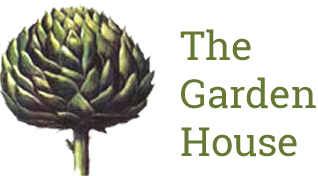Tool Sharpening masterclass!
Posted:19 November 2012
Packing up for winter means cutting back, cleaning your pots, washing down the greenhouse, tidying your shed – and also sharpening and oiling your tools all ready for winter!
Ian Swain collects and restores garden tools. He started acquiring and restoring more traditional equipment over 15 years ago when, while studying at agricultural college, he simply found many modern tools and gardening items unsatisfactory in use, and aesthetically unappealing.
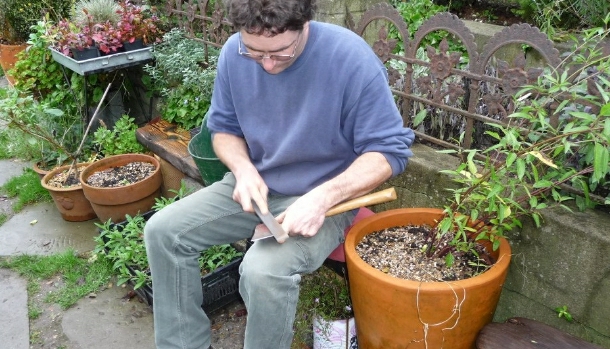
His recent workshop at The Garden House was a masterclass in good maintenance; Ian demonstrating all aspects of sharpening axes, loppers, shears, secateurs and spades. Ian explained in great detail the process for each different tool, each tool requiring careful assessment of the angle of the blade edge. Below info gives some of Ian’s key preparation pointers.
Safety comes first of course – Ian advises:
- Appropriate protective equipment, perhaps gloves and safety boots
- First Aid kit
- Adequate equipment to allow you to work without cutting corners, or yourself
- A quiet place to work free of distractions. Perhaps the job shouldnt be done on site?
- If you are in your place of work then you need a Risk Assessment to show that you have considered these issues.
Some signs that sharpening is required are:
- The tool user is having to apply excessive force to the tool
- The item being cut is left ragged, or with parallel scratches on its cut face
- Chips can be seen on the blade edge
- If looked at head on the blade edge has bright spots that reflect light
Use the right tools for the job; sharpening devices could include:
- Files
- Carborundum stones
- Treadle whetstones
- Carpenters bench stones
- Slip stones
- Diamond stones/hones
- Japanese water stones
Most of these can be obtained in various grades from coarse to very fine. Costs vary from a few pounds to tens of pounds, depending on quality, size and shape. Many stones are fragile, and should always be kept in a padded box. Virtually all the sharpening materials should be used wet, because you are removing metal from blade, and water keeps things moving, and prevents the metal particles getting stuck in the rough abrasive. In addition it prevents metal dust being created. Spit does nicely when out on site!
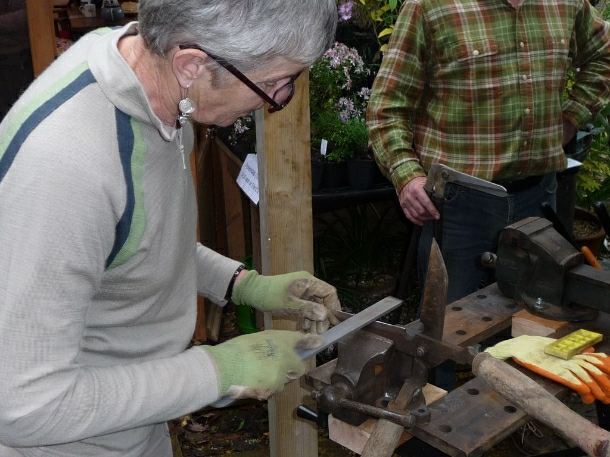
Sit down somewhere quiet and out of the way. Support the tool (for heavy or large items) or the sharpening stone (light items like knives) as appropriate. Depending on what you are sharpening an appropriate support might be your thigh, a stump, a log or the fork of a tree. Improvise, but think through the consequences. A vice can be used to hold the tool, but then you must be vigilant that it stays firmly clamped, take care not to impale yourself, and never leave the tool unattended in the vice.
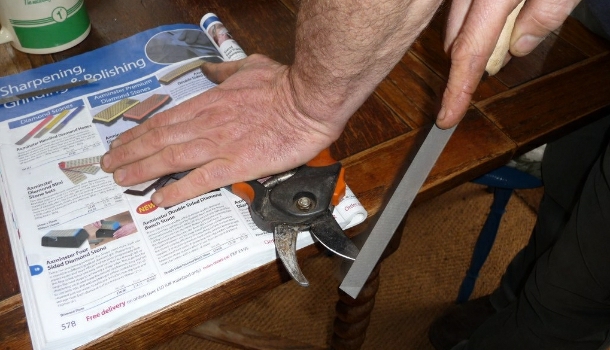
Wear your gloves, dont get distracted look at what you are doing! Unless just touching up the tool you may need to start with a coarse abrasive, and use this to cut back the bevel until you have eliminated the damage (i.e. wear, chips, dents). Then refine the edge with a finer stone. Sharpen away from the edge if you value you fingertips. Dont monitor progress by touching the blade edge.
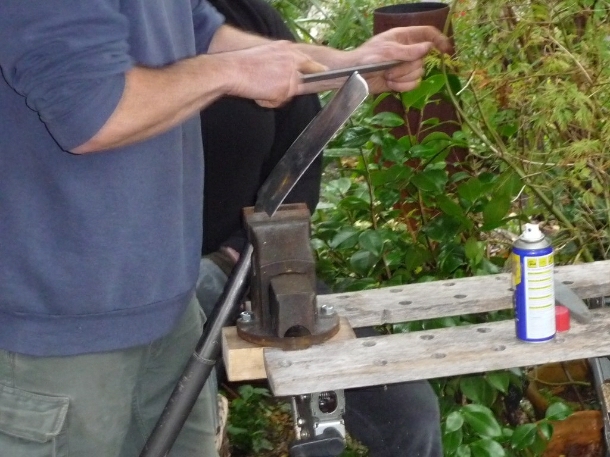
When you have finished sharpening your tools wipe over the blades with 3-in-1 oil. Wooden handles can be rubbed over with boiled linseed oil.
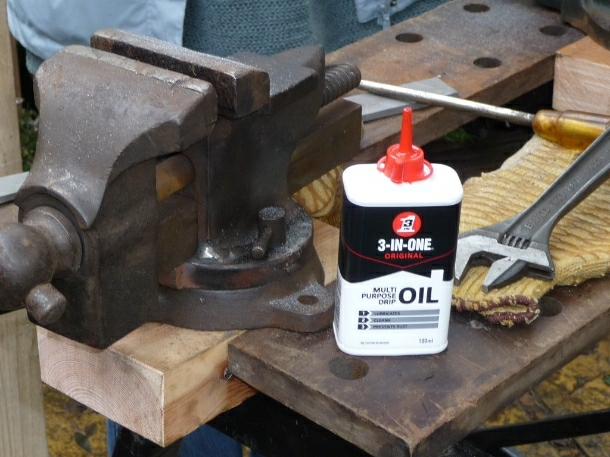
Most of Ian’s stock of restored tools harks from the mid 20th century, but he does occasionally have Victorian and Edwardian items. Their quality and design is often exceptional, and is unlikely to be repeated by modern items. Look out for Ian at various plant and garden fairs in Sussex through the year – and we look forward to welcoming him again to The Garden House! www.theluddite.com
